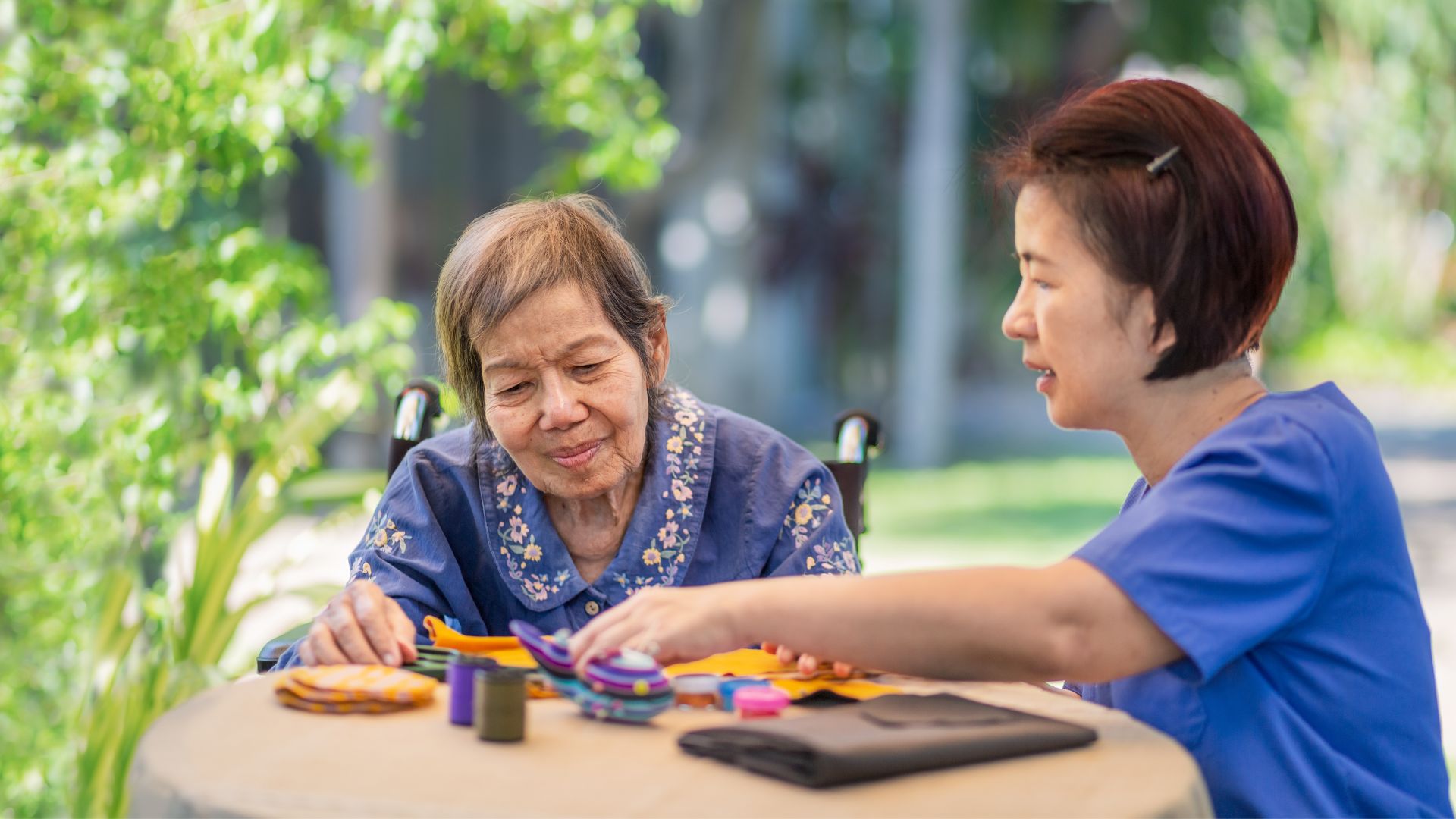
Playback speed:
Several psychosocial approaches have been deemed to be effective in facilitating communication, providing a sense of security, and improving the well-being of persons living with dementia. These approaches include:
- Reality Orientation
- Validation
- Reminiscence
Read on to gain a deeper understanding of what these approaches are, their respective benefits, and how best to carry them out in your interactions with persons living with dementia.
Reality Orientation, Validation & Reminiscence Approaches
Reality Orientation
What is it?
Reality orientation was first developed in the 1960s as a technique to improve the quality of life of persons living with dementia, although its origins were to rehabilitate veterans who were significantly affected by the war.
Reality orientation provides them with conversational clues about who and where they are, the day of the week and the time of the day, current events, the weather, and other “orienting” information. It is best suited for use with persons in the early stage of dementia, where memory loss has not yet progressed.
Benefits
Over time, persons living with dementia may withdraw from contact with others and the environment as they become increasingly disoriented. This results in a lack of sensory stimulation. Reality orientation was found to be effective in providing persons living with dementia with a greater understanding of their environment, possibly resulting in an improved sense of control or self-esteem.
How is it carried out?
Reality orientation operates through the presentation of orientation information (for example time, place and related persons). People are surrounded by familiar objects that can be used to stimulate their memory and provide them with a greater understanding of their surroundings.
It is important to complement words with pictorial cues because some people may no longer comprehend written language. Also consider where they are placed — are they at the right height for their field of vision?
Tips
- Use a clock to display the date and time on a wall at eye level or where it can be easily seen.
- Place a written copy of the day’s routine in a prominent place where the person living with dementia often goes to, such as the dining area or kitchen.

Source: The Globe and Mail
Validation
What is it?
Validation Therapy is an approach developed by social worker Naomi Feil who recognised that reality orientation had limited value for persons living with more advanced dementia.
The term “validation” is used in dementia care to describe the technique of affirming the feelings and reality of persons living with dementia, even though it may not correspond with our reality. Dementia often causes memory loss, with recent memories being the most fragile and usually the first to fade. Gradually, memories of events, places and people of the past are perceived as a reflection of their current reality.
For instance, persons living with dementia may believe that they are still young parents concerned about the welfare of their children. In this case, underlying their concern could be feelings of anxiety and worry.
Benefits
Although reasoning and memory are impaired, the emotional responses of persons living with dementia are still intact. Exploring these emotional responses can allow persons living with dementia to explore unresolved feelings and conflicts, as well as release the building up of anxiety and stress that might otherwise further cloud their thoughts. Additionally, by verbalising their memories and thoughts, and by having them validated, they gain a feeling of being accepted.
Other benefits include strengthening the relationship between the care professional and the person living with dementia, building trust, and improving level of cooperation with the person.
How is it carried out?
Responding to the feelings being expressed, as opposed to what is being said or done, is key to this technique. It can help to distract persons living with dementia from an undesired course of action.
Validation is a 3-step approach used in dementia care to communicate an understanding of the emotional state of persons living with dementia.[1]
The steps in validation are:
Step 1: Respectfully acknowledge or validate the feelings the person is experiencing, for example, “You sound upset/worried/angry….”
Step 2: Offer to help the person with his concern by providing emotional support and reassurance, for example, “I would be worried too if I could not find my daughter.”
Step 3: Gently redirect the person’s attention to something more pleasant by reminiscing, changing the topic of conversation or activity, and/or the environment they are in.
Scenario 1 – Mdm Tan is unable to find her bag. She has forgotten where she has kept it and wrongly accuses her helper of stealing it.
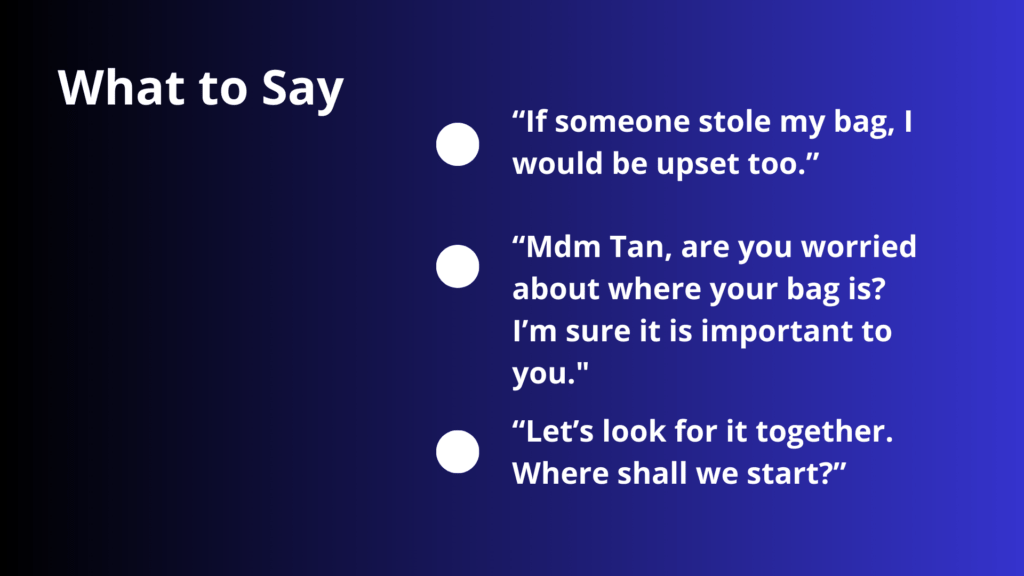
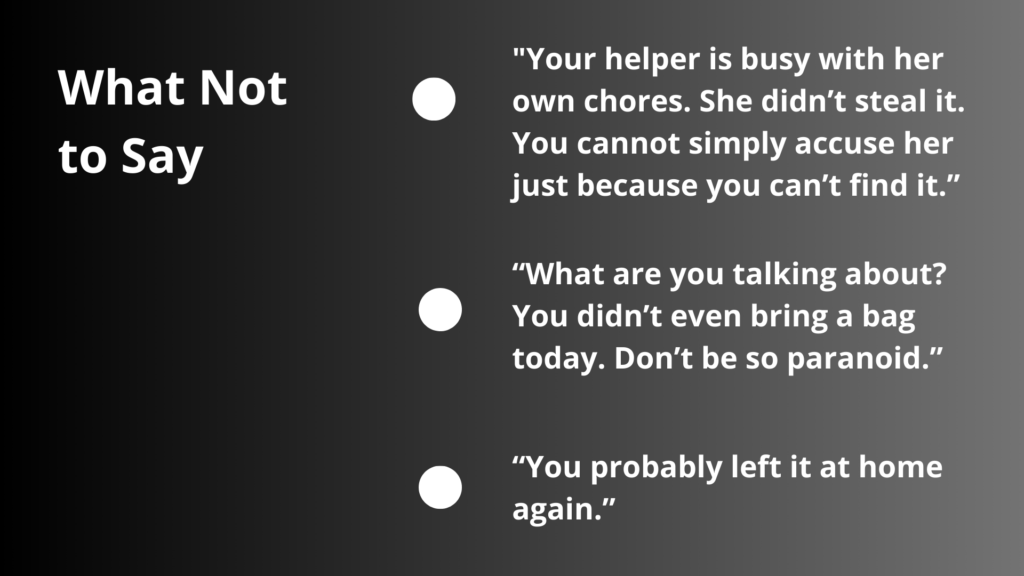
Scenario 2 – Mr Rohan is rummaging through his pockets to find his house keys. He keeps walking towards the front door, trying to leave the centre. He appears worried and says that he wants to go home to be with his family.
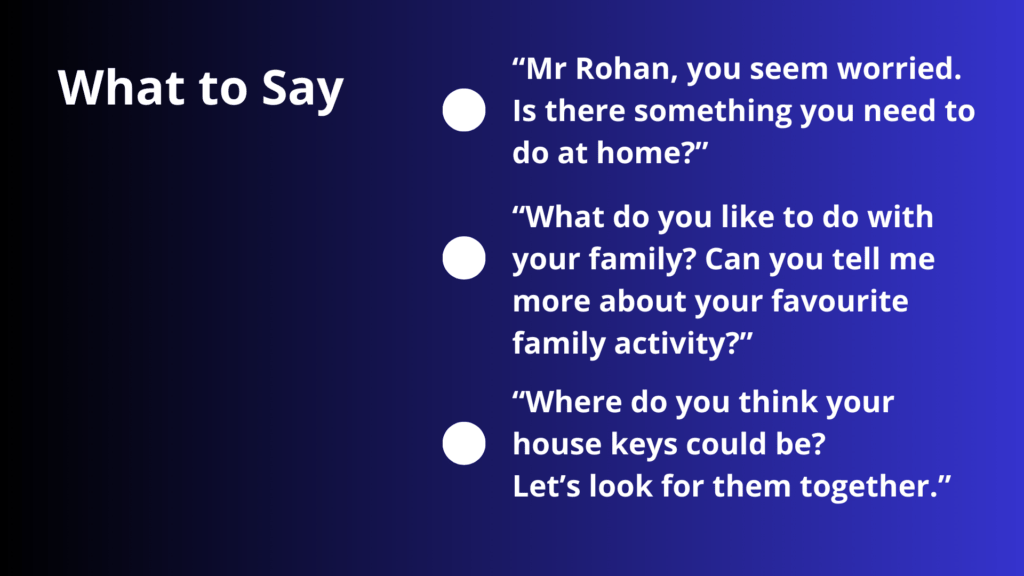
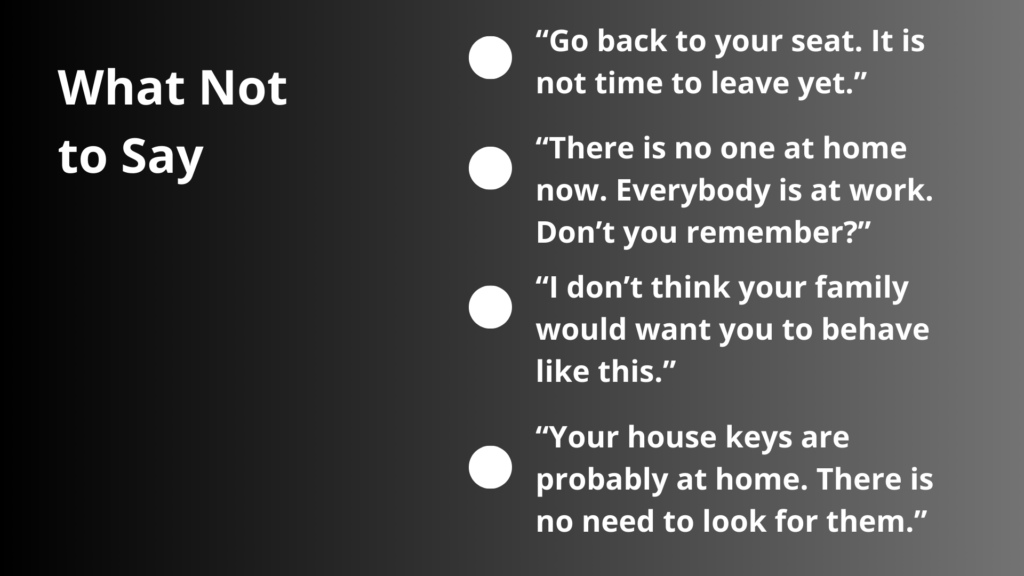
Video Resources on Validation Approach
What is Validation from Naomi Feil
Source: https://vfvalidation.org
Naomi Feil, the creator of Validation Theory, shares the principles of Validation, its benefits and examines the important qualities of a Validation practitioner.
TEDxAmsterdam Women
Validation, communication through empathy | Naomi Feil
Source: TEDx Talks
Creator of the Validation Theory and founder of the Validation Training Institute – Naomi Feil, shares the inspiration behind Validation Theory through her early work with the elderly.
Validation Therapy Technique
Source: Sunrise Senior Living
Eric Portnoff, Director of Memory Support at Sunrise Senior Living, shares a breakthrough in the use of Validation therapy to understand his resident needs through Roberta’s story.
Reminiscence
What is it?
Reminiscence is a method in dementia care that focuses on facilitating recollection of past events and experiences with persons living with dementia.
Persons living with dementia often feel more at home in the past, particularly as memory loss progresses and their understanding of their current environment diminishes. Recollection creates opportunities to improve the well-being of persons living with dementia, and for family members and caregivers to meaningfully connect with them.
Benefits
Reminiscing with persons living with dementia creates a space. The priority is to share about them and the feelings they bring, not so much on the accuracy or details.
Reminiscing involves the discussion of past activities, events and experiences with the person living with dementia, sometimes with the aid of tangible prompts such as photographs, household or familiar items from the past, and music or other sound recordings.
Remember that people with dementia may not be able to name the people or places of their earlier life but often have significant feelings associated with them. Knowing something about their past allows us to reminisce with them while assisting with Activities of Daily Living (ADL). This approach may also help us to understand their behaviours.
How is it carried out?
Sometimes memories can be associated with bad experiences. It is, therefore, important to be aware of this and steer conversations away from them if possible. Ideally, check with their family members for information on good and bad memories that the person may have.
Repetition of stories is common, and care workers should be prepared for this. The positive feelings associated with story telling are what is important, not the story itself.
Reminiscence Therapy
Source: KYDZ International
This videoclip shows ways in which reminiscence therapy is conducted in the dementia ward at St. Andrews Community Hospital.
Now that you have a better understanding of the workings of these psychosocial approaches, we hope that you feel more prepared to effectively communicate with persons living with dementia and potentially alleviate any feelings of distress or discomfort in your clients. Remember to keep in mind the specific needs of your clients before deciding on which approach to use.
Tell us how we can improve?
Additional Resources
Gladys Wilson and Naomi Feil – Validation
Source: memorybridge
Naomi Feil demonstrates the application of Validation Theory through her interaction with Galdys Wilson.
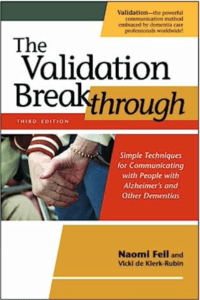
The Validation Breakthrough: Simple Techniques for Communicating with People with Alzheimer’s and Other Dementias
by Naomi Feil
This resource comprises a total of 15 compelling case studies aimed at helping healthcare professionals build relationships with persons living with dementia at various stages, understand and handle various behaviours of concern, better communicate with persons living with dementia, and utilise the Validation approach in various care settings.
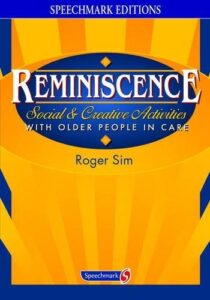
Reminiscence: Social and Creative Activities with Older People in Care (Speechmark Editions)
by Roger Sim
This resource highlights the principles behind reminiscence work and includes ideas for activities, themes and resources using photographs, slides, videos, cultural trips, amongst others.
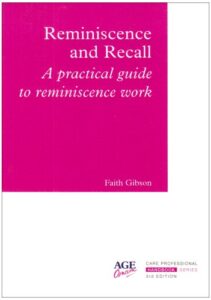
Reminiscence and Recall: A Guide to Good Practice
by Faith Gibson
This resource contains everything that anyone, especially healthcare professionals in various care settings, might want to know about reminiscence work. The introduction clearly states a philosophy which makes the case for reminiscence work while indicating what aspects of good practice should underpin it as an activity.






